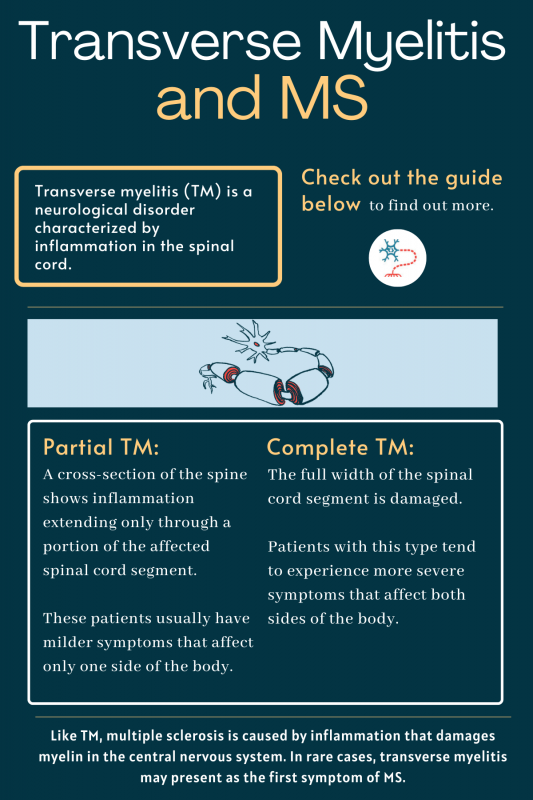FAQs about transverse myelitis and MS
Transverse myelitis is considered a rare disease in the U.S., meaning it affects fewer than 200,000 people. Estimates suggest that about one to eight new cases per million people are diagnosed each year in the country. This equates to about 1,400 new cases per year in total. An estimated 33,000 Americans have some disability resulting from transverse myelitis, according to the National Multiple Sclerosis Society.
Transverse myelitis (TM) refers to demyelinating inflammation on both sides of the spinal cord. Sometimes, this inflammation may result from an underlying autoimmune disease like multiple sclerosis or neuromyelitis optica spectrum disorder. However, infections also may precipitate the development of TM. In most cases, the cause of TM is never identified.
Most people with transverse myelitis experience a single acute attack, and recover at least partially from its symptoms. But some patients may experience subsequent disease attacks, with continually worsening symptoms. These cases often are associated with an underlying inflammatory disorder that results in ongoing inflammation and damage to the spinal cord.
The first-line treatment of transverse myelitis generally involves anti-inflammatory medications that reduce the damaging inflammation. Most people will make at least a partial recovery, with symptoms easing after the initial attack. Some patients, however, may experience persistent and debilitating long-term symptoms.
In the vast majority of cases, someone who experiences an episode of TM will not experience subsequent or recurrent transverse myelitis attacks. In the rare cases where a second attack does occur, it usually is accompanied by inflammation elsewhere in the nervous system and indicates the presence of other autoimmune diseases, such as multiple sclerosis.
Related Articles

 Fact-checked by
Fact-checked by 






